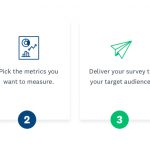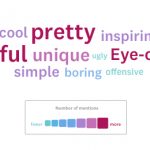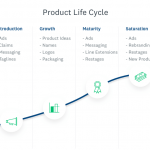Logo testing: How to find the best logo for your brand
Whether you’re launching a new business or rebranding an existing one, selecting the right logo is one of the most important branding decisions you’ll make. Don’t leave such an important decision up to chance. See what works and what doesn’t by performing logo testing.
What is logo testing?
Logo testing places different logos in front of a share of your target market and asks them for feedback on your designs. It allows you to gauge the effectiveness of your options and measure specific metrics, like the appeal or uniqueness of each design.
Logo testing allows you to learn about good logo design and pinpoint cool logo ideas, empowering you to pick one that you’re confident will be successful.
Why logo testing is important
A good logo is a top brand differentiator, which is why large companies consistently invest hundreds of thousands of dollars in their designs. Whatever your budget is, it’s important to test your logo ideas with a focus group or a survey before you launch them, since even the most expensive designs can miss their mark.
Logo testing helps you enter the next stage of the design process with 4 major advantages:
- You can back up your decisions with data. It’s hard for people to argue against hard numbers. Logo testing proves which design resonates most with your target audience, which makes it easier for you to choose a final design and persuade coworkers to get behind that choice.
- You have ideas for further improvement. Your top-performing logo might not be perfect. For example, its color scheme might still be boring. This feedback gives you the chance to take an already likeable logo and improve it.
- You understand how different groups will react to your design. More specifically, you’ll discover which logo resonates most with your ideal customers, and find out how you can tweak your design to appeal to specific groups.
- You can iterate quickly. By using agile market research—a form of research that requires consistent rounds of gathering data—, your business can react more quickly to changes in the market. This data helps you and your team make better decisions more often without relying on insights organizations to provide data.
Need help testing your logos?
We’ll help design your survey, field it, and analyze its responses in as little as an hour!
How to conduct a logo test
Now that you know why it’s important to evaluate your logo ideas before coming to a decision, you’re ready to start testing them. Here are the 4 key steps you’ll want to adopt:

Pick the stimuli you want to test
While you can test any logo you want, it’s best to choose stimuli that you’re already confident in based on positive reactions from coworkers or other people who’ve seen the design. To avoid skewing your results, choose designs that are in a similar stage of development. If you’re testing a finished logo against one that you’re still working on, you already know which one will win.
To make logo testing more manageable for you and your respondents, it’s best to keep the number of stimuli low. The maximum number of stimuli you should select changes based on whether you decide on implementing a monadic or a sequential monadic survey design.
Monadic survey design
A monadic survey design divides up your respondent pool and presents each respondent with a single stimulus. When you’ve gathered enough feedback on each stimulus, you can pick a winning design by comparing the feedback across stimuli.
Here’s an example of a logo test with a monadic design.
This design lets you to ask more questions on each stimulus. Also, it results in a shorter questionnaire, which keeps respondents from going through your survey quickly and it benefits your completion rate. However, as you’re only showing individual respondents a single stimulus, you’ll need to target a larger audience. This can prove costly and it might not be feasible.
Sequential monadic survey design
A sequential monadic survey design presents each respondent with multiple stimuli. After you’ve received your responses, you can directly compare your stimuli against one another.
Here’s how a sequential monadic logo test can be conducted.
This type of design allows you to survey a relatively smaller audience than a monadic design, which makes it more practical. But if you want to limit the length of your survey, you won’t get to ask as many questions about each stimulus.
Read more about the benefits and drawbacks of each design, as well as how to perform each in SurveyMonkey.
Choose the metrics you want to test
What makes a good logo design? The metrics you measure will help you decide.
Your questions can be as specific as you’d like. If you want to know whether your logo idea stands out, for example, you might ask about its visibility and aesthetics. In general, here are the top metrics to consider:
- Appeal: Is the design of your logo enticing?
- Believability: Does its message seem credible?
- Ease of identifying: Is it easy to recognize?
- Purchase intent: Will it motivate people to buy what you’re selling?
- Relevance: Does it reflect your audience’s needs and wants?
- Uniqueness: Is it different from others?
The utility of each metric depends on your goals. If you want a logo that will really drive sales, purchase intent may be the most important. If your main goal is to differentiate your brand, you should place more importance on the uniqueness of its design.
You can measure any metric in your logo testing survey using a Likert scale. The Likert scale is simple and intuitive for respondents, offers consistent choices, and makes it easy for you to analyze results. Your questions can follow the formula, “How (metric) is the logo?” where your answer options go from “Extremely (metric)” to “Not at all (metric).”
For instance, here’s how the question might appear when our metric is uniqueness:
How unique is the logo?
- Extremely unique
- Very unique
- Somewhat unique
- Not so unique
- Not at all unique
Sometimes, when you present respondents with multiple stimuli, they react similarly to each stimulus. To ensure your survey results are still useful, it’s often a good idea to make respondents choose their favorite logo with a forced-answer question at the end of the survey. This question will also help you rank the importance of each metric to the overall likeability of the logo.
Your survey might also include screener, category, and demographic questions that tell you more about the people you’re collecting feedback from and let you segment your results by group. Learn about each of these questions in our robust guide for concept testing.
Want guidance from market research professionals? Here are some resources that can help you!
SurveyMonkey expert solutions for logo analysis: help you quickly test your logo concepts with built-in expert methodology, a trusted online panel, and AI-Powered Insights so that you can get results quickly, without the legwork.
Ultimate guide to running market research: This guide includes everything you’d want to know about running market research!
Logo testing survey template: Our pro-certified survey template allows you to brainstorm your questions. You can also edit it in whatever ways suit your needs.
SurveyMonkey Audience: Our global consumer panel lets you survey people in 130+ countries.
Market Research Services: From express delivery to dedicated support, our market research pros will help make sure that you run your research on SurveyMonkey Audience effectively.
Give your survey to qualified respondents
The only way to determine the real appeal of your logo ideas is to have your target audience take a look at them. There are 2 ways to get feedback from your target market:
- A focus group lets you field in-depth feedback on your questions. These groups can be costly to organize though, and you probably won’t be able to gather feedback from a representative sample of your target audience with just a focus group.
- SurveyMonkey Audience lets you specify your target demographic and sample size, and then start collecting feedback from a representative sample within minutes. This option is more cost-effective than a focus group, but survey feedback may not be as in-depth as the feedback you get from focus groups.
Analyze your responses to pick a winner
After you’ve gathered responses, you’re set to compare your logo ideas. To help you narrow in on the data you value most and to make your analysis easier, we suggest you use Top 2 Box scores in your survey analysis. Top 2 Box scores makes it easy to compare logos across metrics and identify the overall winner.
Remember to also review the responses from your open-ended questions (those that don’t include answer choices). A word cloud lets you pinpoint the top takeaways from each logo.

There’s a whole lot more that goes into testing your logos. Take a deeper dive on concept testing with brand names by reading the “The ultimate guide to concept testing.”
When to test your logo ideas
Logo testing belongs to the development, growth, and saturation stages of the product life cycle, when you’re either developing your brand or rebranding your business to go in a new direction.

During the development stage, you’ll probably be looking for high-level input that’ll help you make significant decisions about the aesthetic of your brand. This is the time to ask respondents to choose between several totally different logos, for example. Because your brand is new, it’s the best time to gather directional feedback on your logo.
During the growth and saturation stages, you’ll probably be looking for more nuanced feedback on your logo. This is the time to ask respondents focused questions about the logos’ colors, fonts, and themes. It’s also the time to think about sampling your loyal customer base, just to make sure they’re on board with your rebranding efforts.
Logo testing best practices
As you test your logo ideas, make sure you keep an eye on these five things:
- Evaluate each logo with the same questions. Keep the questions and answer options consistent across logos, so you can compare your designs to each other with ease.
- Use high-quality graphics. Your respondents might not be able to give accurate feedback on pixelated logos, and they’ll have a worse perception of the designs, as well as your brand.
- Survey a statistically significant number of people. Determine if your sample pool is large enough to be statistically significant using our sample size calculator, and don’t be afraid to use SurveyMonkey Audience to reach more people in your target audience.
- Only ask the important questions in your survey. Our research shows that most respondents don’t want to fill out a surveys that take longer than 10 minutes to complete. They’re also less likely to give detailed and accurate responses to longer surveys.
- Test current and competitor logos alongside your new ideas. Testing your current logo will help you decide whether or not rebranding will benefit your business or product. Testing the logos of one or more competitors shows you how your designs measure up to the competition.
Great job! Now you know why logo testing is so important, have learned how to run your own test, and you’ve got some tricks up your sleeve to ensure your tests run smoothly. Now it’s time to find a logo that can differentiate your product and help your brand stand out.
Test your logo to measure its effectiveness
Test your business logo's influence by putting it in front of a focus audience that best matches your customer base. SurveyMonkey allows you to customize your questions or you can select from a bank of queries. Our robust logo design analysis can help you test multiple logo variations to identify which attributes work and which don't. You can also use the Likert scale to make it easy for respondents to assess with a quantitative scoring system. With our platform that delivers valuable insights, you can test color, wording, font, and pictorials. Vet your logos today.
Discover more resources

Understand your target market to fuel explosive brand growth
Brand marketing managers can use this toolkit to understand your target audience, grow your brand, and prove ROI.

Customer Behavior Analysis: A Complete Guide and Examples
Read our step-by-step guide on conducting customer behavior analysis. Learn how to collect data and improve customer touchpoints.

Survey Analysis Report: How to Create, Tips & Examples
Presenting your research soon? Learn the most effective way to use a survey analysis report. See sections to include and report best practices.

What is agile market research and how to use it
Conduct market research faster for real-time insights and smart decision-making. Learn what agile market research is and how to apply the framework.